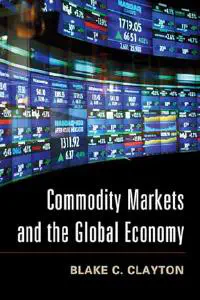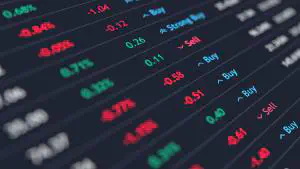Overview
Commodity markets are financial markets where raw materials and primary agricultural products are bought and sold. These commodities include energy resources like oil and natural gas, metals such as gold and copper, agricultural goods like wheat and coffee, and soft commodities such as cotton and sugar. These markets are essential to the global economy, providing platforms for producers, consumers, and investors to trade goods, manage risks, and determine prices.
Commodity markets are broadly divided into physical markets, where actual goods change hands, and futures markets, where contracts are traded for the delivery of commodities at a future date and price. Futures markets allow participants to hedge against price fluctuations or speculate on price changes, contributing to market liquidity and price efficiency.
A crucial role of commodity markets is price discovery. Prices reflect supply and demand, weather patterns, geopolitical events, and economic trends, helping market participants make informed decisions. These markets also facilitate hedging, where producers and consumers lock in prices through futures contracts to protect against volatility—for example, a farmer securing a stable price for their harvest.
Speculators also participate in commodity markets, aiming to profit from price movements without intending physical delivery. While speculation adds liquidity and can improve market efficiency, it can sometimes increase price volatility. Commodity markets are also heavily influenced by global events, as fluctuations in prices—like those of oil—can affect production costs, consumer prices, and even inflation worldwide.
Finally, commodity markets operate under various regulations and oversight to ensure fairness, prevent manipulation, and protect participants. Overall, these markets are vital economic mechanisms that enable efficient trade, risk management, and global price setting for essential raw materials and agricultural products.
In Context
Dating from the ancient use of goods and assets, including sheep, goats, pigs, and other items, as commodity money, individuals have sought ways as early as the 1500s B.C. to standardize and trade commodities for delivery in a manner that would be smooth and predictable. Rice futures traded in China as long as 2,000 to 2,500 years ago. Although the origin of the term “commodity” is French (commodite, meaning benefit or profit) and dates back to the 1400s, the first futures pricing in commodities originated in the late 1500s based on advanced pricing by Spain and Portugal of spices from the newly opened India routes. The first modern organized futures exchange began in 1710 at the Dojima Rice Exchange in Osaka, Japan, where merchants stored rice in warehouses for future use (West 2000). In the United States, futures trading started in the middle of the nineteenth century in the grain markets at the Chicago Board of Trade (CBOT)—the oldest established commodities house.
Commodities can be traded directly (as real-time trades) or indirectly (e.g., futures, options, and exchange-traded funds [ETFs]). Most individual commodities are traded in the form of futures, in which the trading is not based on the commodity itself but rather on a contract to buy or sell it for a certain price by a stated date in the future. The motivation for such trading is based on either price speculation or hedging. Speculators take positions in futures contracts for the purpose of trying to recognize a gain before closing out their position before the delivery (ending) date of the contract. Hedgers use futures contracts to lock in a future price at which they can buy or sell. This practice carries a potential for losses from market fluctuations, but for investors who are willing to ride out possibly substantial market volatility, commodity exposure offers the opportunity to reap high rewards. Positions can be long or short depending on the market outlook or hedging needs.
Commodity futures and options are highly leveraged and are traded in terms of contract sizes, instead of in terms of shares such as with stocks. Also, investors can buy and sell positions whenever the markets are open.
Commodity markets have been the source of extraordinary global disruptive change since the start of this century. They have also suffered the consequences of the very changes they triggered. In this sense what has occurred within the commodities sector stands alongside the growth of global terrorism, the increased failure of nation-states, the challenge to the sanctity of national borders, and the rise to prominence of China, India, and other emerging market countries and the relative decline of power and influence of the United States, Europe, and Japan as key features of the geo-economic and political landscape over the past decade and a half.
In many ways commodity markets have been at the core of global politics and economics since the start of the twenty-first century and were certainly a main feature of the last decade, the so-called “Commodity Super Cycle Era,” when prices of food, fuel, industrial metals, bulks, and gold reached ever increasing record levels at least in nominal terms until these commodity prices themselves were significantly important in driving the world economy into recession in 2008. Partly this has been a function of the growing dominance of emerging markets in the world economy and the concentration of new commodity demand, itself associated with rapid if not frenetic fixed asset investment and strong industrial production in the non-OECD world. Partly too it has been a function of the collapse of the Soviet Union and the end of bipolarity with its focus on nuclear weapons and arms control. Increasingly international politics are being played out through persistent but lower levels of conflict that have affected commodity flows and also through financial instruments — including commodity instruments — that provide “safer” ways to promote national (and often group level) objectives.
Commodities can be traded directly (as real-time trades) or indirectly (e.g., futures, options, and exchange-traded funds [ETFs]). Most individual commodities are traded in the form of futures, in which the trading is not based on the commodity itself but rather on a contract to buy or sell it for a certain price by a stated date in the future. The motivation for such trading is based on either price speculation or hedging. Speculators take positions in futures contracts for the purpose of trying to recognize a gain before closing out their position before the delivery (ending) date of the contract. Hedgers use futures contracts to lock in a future price at which they can buy or sell. This practice carries a potential for losses from market fluctuations, but for investors who are willing to ride out possibly substantial market volatility, commodity exposure offers the opportunity to reap high rewards. Positions can be long or short depending on the market outlook or hedging needs.
Commodity futures and options are highly leveraged and are traded in terms of contract sizes, instead of in terms of shares such as with stocks. Also, investors can buy and sell positions whenever the markets are open.





